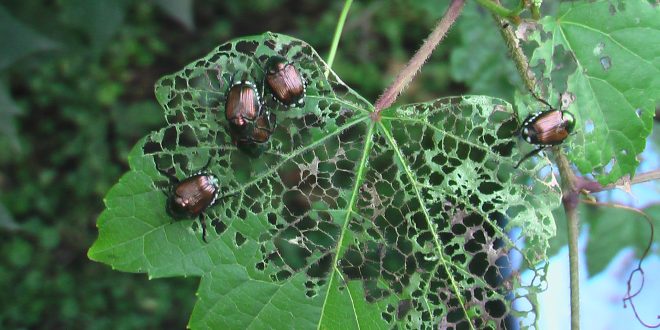The Japanese beetle, an insidious invasive insect, has returned this year with a vengeance. The beetle attacks a variety of plants including trees. The adult beetle consumes young trees’ leaves, literally skeletonizing them.
Some trees appear less susceptible to the beetle, including red and white oaks, redbud and red maple and the dogwoods. Fruit trees, pin oaks, linden and birch are highly susceptible to beetle feeding.
Certain wildlife friends relish the Japanese beetle, ranging from meadowlarks, starlings, cardinals to catbirds. Pheasant, chickens, ducks, geese and guineas like them as well, according to the U.S. Department of Agriculture.
Starlings and crows consume the beetle larvae, as do skunks, racoons and moles. Naturally, those grub eaters can damage turf as they forage.
Property owners with manageable numbers of small trees can hand pick the pests and drop them into a solution of water and dishwashing detergent. The county extension office and local garden centers are good sources for insecticide information.
Current times require new tactics. Plant trees that thrive under current environmental conditions. Conduct research into attracting beetle predators.
This fall, the Hendricks County Soil & Water Conservation District offers a variety of trees and shrubs. Advance reservation calls can be made to (317) 745-2555, ext. 3.
The species list and pricing will be announced later in the summer; orders can be placed then.





